How sensitive is our climate?
What the science says...
| Select a level... |
 Basic
Basic
|
 Intermediate
Intermediate
|
 Advanced
Advanced
| ||||
|
Some global warming 'skeptics' argue that the Earth's climate sensitivity is so low that a doubling of atmospheric CO2 will result in a surface temperature change on the order of 1°C or less, and that therefore global warming is nothing to worry about. However, values this low are inconsistent with numerous studies using a wide variety of methods, including (i) paleoclimate data, (ii) recent empirical data, and (iii) generally accepted climate models. |
|||||||
Climate Myth...
Climate sensitivity is low
"His [Dr Spencer's] latest research demonstrates that – in the short term, at any rate – the temperature feedbacks that the IPCC imagines will greatly amplify any initial warming caused by CO2 are net-negative, attenuating the warming they are supposed to enhance. His best estimate is that the warming in response to a doubling of CO2 concentration, which may happen this century unless the usual suspects get away with shutting down the economies of the West, will be a harmless 1 Fahrenheit degree, not the 6 F predicted by the IPCC." (Christopher Monckton)
Climate sensitivity describes how sensitive the global climate is to a change in the amount of energy reaching the Earth's surface and lower atmosphere (a.k.a. a radiative forcing). For example, we know that if the amount of carbon dioxide (CO2) in the Earth's atmosphere doubles from the pre-industrial level of 280 parts per million by volume (ppmv) to 560 ppmv, this will cause an energy imbalance by trapping more outgoing thermal radiation in the atmosphere, enough to directly warm the surface approximately 1.2°C. However, this doesn't account for feedbacks, for example ice melting and making the planet less reflective, and the warmer atmosphere holding more water vapor (another greenhouse gas).
Climate sensitivity is the amount the planet will warm when accounting for the various feedbacks affecting the global climate. The relevant formula is:
dT = λ*dF
Where 'dT' is the change in the Earth's average surface temperature, 'λ' is the climate sensitivity, usually with units in Kelvin or degrees Celsius per Watts per square meter (°C/[W m-2]), and 'dF' is the radiative forcing, which is discussed in further detail in the Advanced rebuttal to the 'CO2 effect is weak' argument.
Climate sensitivity is not specific to CO2
It's important to note that the surface temperature change is proportional to the sensitivity and radiative forcing (in W m-2), regardless of the source of the energy imbalance. The climate sensitivity to different radiative forcings differs depending on the efficacy of the forcing, but the climate is not significantly more sensitive to other radiative forcings besides greenhouse gases.
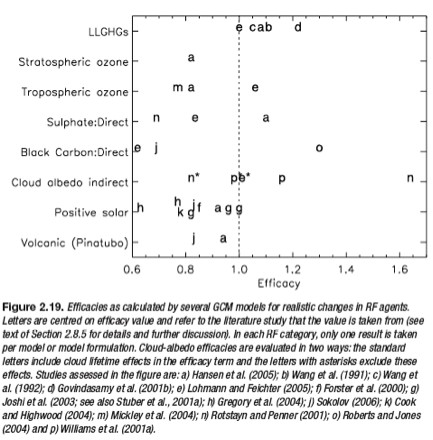
Figure 1: Efficacies of various radiative forcings as calculated in numerous different studies (IPCC 2007)
In other words, if you argue that the Earth has a low climate sensitivity to CO2, you are also arguing for a low climate sensitivity to other influences such as solar irradiance, orbital changes, and volcanic emissions. In fact, as shown in Figure 1, the climate is less sensitive to changes in solar activity than greenhouse gases. Thus when arguing for low climate sensitivity, it becomes difficult to explain past climate changes. For example, between glacial and interglacial periods, the planet's average temperature changes on the order of 6°C (more like 8-10°C in the Antarctic). If the climate sensitivity is low, for example due to increasing low-lying cloud cover reflecting more sunlight as a response to global warming, then how can these large past climate changes be explained?
Figure 2: Antarctic temperature changes over the past 450,000 years as measured from ice cores
What is the possible range of climate sensitivity?
The IPCC Fourth Assessment Report summarized climate sensitivity as "likely to be in the range 2 to 4.5°C with a best estimate of about 3°C, and is very unlikely to be less than 1.5°C. Values substantially higher than 4.5°C cannot be excluded, but agreement of models with observations is not as good for those values."
Individual studies have put climate sensitivity from a doubling of CO2 at anywhere between 0.5°C and 10°C; however, as a consequence of increasingly better data, it appears that the extreme higher and lower values are very unlikely. In fact, as climate science has developed and advanced over time , estimates have converged around 3°C. A summary of recent climate sensitivity studies can be found here.
A study led by Stefan Rahmstorf concluded "many vastly improved models have been developed by a number of climate research centers around the world. Current state-of-the-art climate models span a range of 2.6–4.1°C, most clustering around 3°C" (Rahmstorf 2008). Several studies have put the lower bound of climate sensitivity at about 1.5°C,on the other hand, several others have found that a sensitivity higher than 4.5°C can't be ruled out.
A 2008 study led by James Hansen found that climate sensitivity to "fast feedback processes" is 3°C, but when accounting for longer-term feedbacks (such as ice sheet disintegration, vegetation migration, and greenhouse gas release from soils, tundra or ocean), if atmospheric CO2 remains at the doubled level, the sensitivity increases to 6°C based on paleoclimatic (historical climate) data.
What are the limits on the climate sensitivity value?
Paleoclimate
The main limit on the sensitivity value is that it has to be consistent with paleoclimatic data. A sensitivity which is too low will be inconsistent with past climate changes - basically if there is some large negative feedback which makes the sensitivity too low, it would have prevented the planet from transitioning from ice ages to interglacial periods, for example. Similarly a high climate sensitivity would have caused more and larger past climate changes.
One recent study examining the Palaeocene–Eocene Thermal Maximum (about 55 million years ago), during which the planet warmed 5-9°C, found that "At accepted values for the climate sensitivity to a doubling of the atmospheric CO2 concentration, this rise in CO2 can explain only between 1 and 3.5°C of the warming inferred from proxy records" (Zeebe 2009). This suggests that climate sensitivity may be higher than we currently believe, but it likely isn't lower.
Recent responses to large volcanic eruptions
Climate scientists have also attempted to estimate climate sensitivity based on the response to recent large volcanic eruptions, such as Mount Pinatubo in 1991. Wigley et al. (2005) found:
"Comparisons of observed and modeled coolings after the eruptions of Agung, El Chichón, and Pinatubo give implied climate sensitivities that are consistent with the Intergovernmental Panel on Climate Change (IPCC) range of 1.5–4.5°C. The cooling associated with Pinatubo appears to require a sensitivity above the IPCC lower bound of 1.5°C, and none of the observed eruption responses rules out a sensitivity above 4.5°C."
Similarly, Forster et al. (2006) concluded as follows.
"A climate feedback parameter of 2.3 +/- 1.4 W m-2 K-1 is found. This corresponds to a 1.0–4.1 K range for the equilibrium warming due to a doubling of carbon dioxide"
Recent responses to the 11-year solar cycle
"the annual rate of increase in radiative forcing of the lower atmosphere from solar min to solar max happens to be equivalent to that from a 1% per year increase in greenhouse gases, a rate commonly used in greenhouse-gas emission scenarios [Houghton and et al., 2001]. So it is interesting to compare the magnitude and pattern of the observed solar-cycle response to the transient warming expected due to increasing greenhouse gases in five years."
Empirical or 'Instrumental' Observation Methods
Gregory et al. (2002) used observed interior-ocean temperature changes, surface temperature changes measured since 1860, and estimates of anthropogenic and natural radiative forcing of the climate system to estimate its climate sensitivity. They found:
"...we obtain a 90% confidence interval, whose lower bound (the 5th percentile) is 1.6 K. The median is 6.1 K, above the canonical range of 1.5–4.5 K; the mode is 2.1 K."Recently, several other studies have taken a similar approach and yielded lower equilibrium climate sensitivity estimates, i.e. Ring et al. (2012), Aldrin et al. (2012), Lewis (2013), and Otto et al. (2013), in most cases with central estimates closer to 2°C for a doubling of CO2.
However, Shindell (2014) reconciles the difference between the climate sensitivity estimates in these varying approaches. Shindell notes that the 'empircal' or 'instrumental' approach studies assume that the global mean temperature response to all forcings is equal. His study investigates this assumption by comparing climate model temperature responses to greenhouse gases with their responses to aerosols and ozone.
Shindell, who was a co-author on Otto et al. (2013), notes that “forcing in the NH extratropics [above 30° latitude] causes a greater global mean temperature response than forcing in the tropics”; a result noted by Hansen et al. (1997):
“A forcing at high latitudes yields a larger response than a forcing at low latitudes. This is expected because of the sea ice feedback at high latitudes and the more stable lapse rate at high latitudes”
The forcing from aerosols and ozone isn’t globally uniform, but instead focused more in the northern hemisphere extratropics. Hence it results in a relatively larger temperature response than an equivalent forcing from greenhouse gases, which are well mixed throughout the atmosphere.
When assuming equal sensitivity to all forcings, Shindell estimates the transient climate response (TCR) at 1.0–2.1°C, most likely 1.4°C, which is similar to the estimate in Otto et al. (2013). However, when Shindell accounts for the higher sensitivity to the aerosol and ozone forcings, the estimated TCR range rises to 1.3–3.2°C, most likely 1.7°C. Compared to the IPCC estimated TCR range of 1–2.5°C, and the range in climate models of 1.1–2.6°C, Shindell's results give a low probability for the low end of the range and higher probability for the high end. Given the strong correlation between TCR and equilibrium climate sensitivity, Shindell’s results also suggest that the lower climate sensitivity estimates are unlikely to be accurate.
Examining Past Temperature Projections
In 1988, NASA climate scientist Dr James Hansen produced a groundbreaking study in which he produced a global climate model that calculated future warming based on three different CO2 emissions scenarios labeled A, B, and C (Hansen 1988). Now, after more than 20 years, we are able to review Hansen’s projections.
Hansen's model assumed a rather high climate sensitivity of 4.2°C for a doubling of CO2. His Scenario B has been the closest to reality, with the actual total radiative forcing being about 10% higher than in this emissions scenario. The warming trend predicted in this scenario from 1988 to 2010 was about 0.26°C per decade whereas the measured temperature increase over that period was approximately 0.18°C per decade, or about 40% lower than Scenario B.
Therefore, what Hansen's models and the real-world observations tell us is that climate sensitivity is about 40% below 4.2°C, or once again, right around 3°C for a doubling of atmospheric CO2. For further details, see the Advanced rebuttal to "Hansen's 1988 prediction was wrong."
Probabilistic Estimate Analysis
"the long fat tail that is characteristic of all recent estimates of climate sensitivity simply disappears, with an upper 95% probability limit...easily shown to lie close to 4°C, and certainly well below 6°C."
Annan and Hargreaves concluded that the climate sensitivity to a doubling of atmospheric CO2 is probably close to 3°C, it may be higher, but it's probably not much lower.
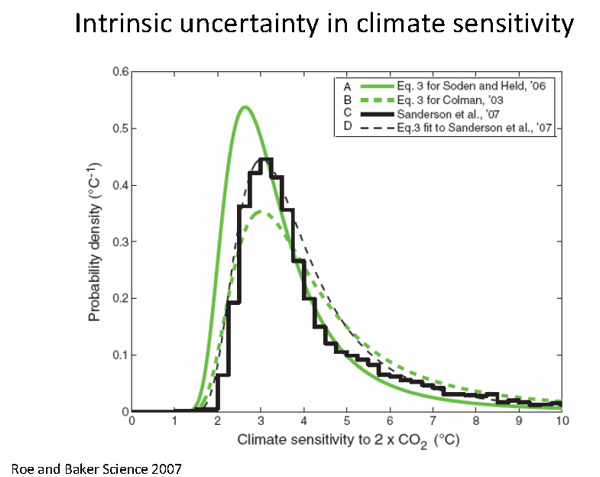
Figure 3: Probability distribution of climate sensitivity to a doubling of atmospheric CO2
Summary of these results
Knutti and Hegerl (2008) presents a comprehensive, concise overview of our scientific understanding of climate sensitivity. In their paper, they present a figure which neatly encapsulates how various methods of estimating climate sensitivity examining different time periods have yielded consistent results, as the studies described above show. As you can see, the various methodologies are generally consistent with the range of 2-4.5°C, with few methods leaving the possibility of lower values, but several unable to rule out higher values.
Figure 4: Distributions and ranges for climate sensitivity from different lines of evidence. The circle indicates the most likely value. The thin colored bars indicate very likely value (more than 90% probability). The thicker colored bars indicate likely values (more than 66% probability). Dashed lines indicate no robust constraint on an upper bound. The IPCC likely range (2 to 4.5°C) is indicated by the vertical light blue bar.
What Does it all Mean?

Figure 5: Projected decadal mean concentrations of CO2. Red solid lines are median, 5%, and 95% for the MIT study, the dashed blue line is the same from the 2003 MIT projection.
So unless we change course, we're looking at a rapid warming over the 21st century. Most climate scientists agree that a 2°C warming is the 'danger limit'. Figure 5 shows temperature rise for a given CO2 level. The dark grey area indicates the climate sensitivity likely range of 2 to 4.5°C.
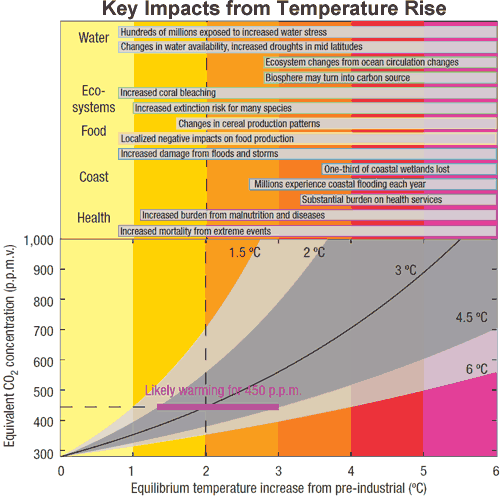
Figure 6: Relation between atmospheric CO2 concentration and key impacts associated with equilibrium global temperature increase. The most likely warming is indicated for climate sensitivity 3°C (black solid). The likely range (dark grey) is for the climate sensitivity range 2 to 4.5°C. Selected key impacts (some delayed) for several sectors and different temperatures are indicated in the top part of the figure (Knutti and Hegerl 2008)
If we manage to stabilize CO2 levels at 450 ppmv (the atmospheric CO2 concentration as of 2010 is about 390 ppmv), according to the best estimate, we have a probability of less than 50% of meeting the 2°C target. The key impacts associated with 2°C warming can be seen at the top of Figure 6. The tight constraint on the lower limit of climate sensitivity indicates we're looking down the barrel of significant warming in future decades.
As the scientists at RealClimate put it,"Global warming of 2°C would leave the Earth warmer than it has been in millions of years, a disruption of climate conditions that have been stable for longer than the history of human agriculture. Given the drought that already afflicts Australia, the crumbling of the sea ice in the Arctic, and the increasing storm damage after only 0.8°C of warming so far, calling 2°C a danger limit seems to us pretty cavalier."Advanced rebuttal written by dana1981
Update July 2015:
Here is a related lecture-video from Denial101x - Making Sense of Climate Science Denial
Last updated on 5 July 2015 by pattimer. View Archives































 Arguments
Arguments


































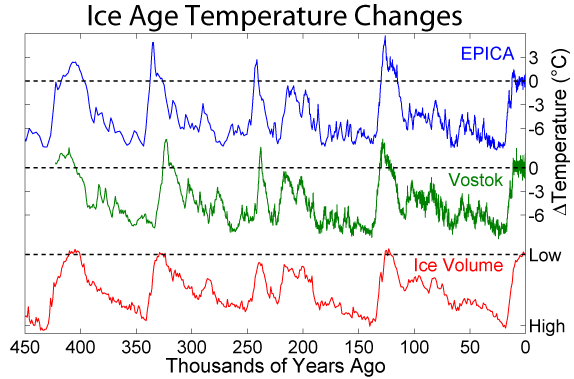
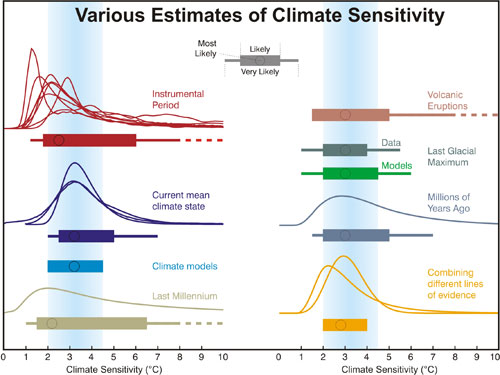







Some general info: "The Physical Science behind Climate Change Why are climatologists so highly confident that human activities are dangerously warming Earth? Members of the IPCC, the 2007 peace winner, write on climate change By William Collins, Robert Colman, James Haywood, Martin R. Manning and Philip Mote" link "Simple Question, Simple Answer… Not" Real Climate, I have comments here (numbers of comments that were mine:) Real Climate (11,86,98,109,132,138,141) Real Climate (104,105,111) Real Climate (59,123,147,152,153,159,160,171,175,189,193,195,197,218,234,236,239,251,257,265,266,267,268(repeated an error regarding $700 billion, oops!),271,273,285,294, NOTE ALSO these comments that are not mine: 102,226 and the the responses to 81,166,201) Real Climate (9,10,11,49,50,60,138,142,161,166,170,171,175) HERE IS THE COMMENT ON THERMODYNAMICS (and some other comments): Real Climate (69,73,74,75)
[RH] Fixed links that were breaking page format.
More on radiation transfer within and through the atmosphere: Regional Climate Projections (25,26*,55**,56**,57**,58**,83***,85***,104,110****,111,146,191) asterisks pertain more to visualizing greenhouse effect physics (171-173,174*,175,176*,180~,181~,184*****,189****,192***,193,194,203,214,215,218 (*** near bottom),232**,235,238,245,246) Real Climate (105**,144**,168 (LTE) ,170** (and LTE),172 (mainly LTE),192**,229**,241**(ext),251***(BB),252***(BB),261**(ext),274*,275*,285*,289) LTE = local thermodynamic equilibrium BB = fundamentals of blackbody radiation and radiative physics ext = what happens in extreme scenarios
[RH] Fixed links that were breaking page formatting.